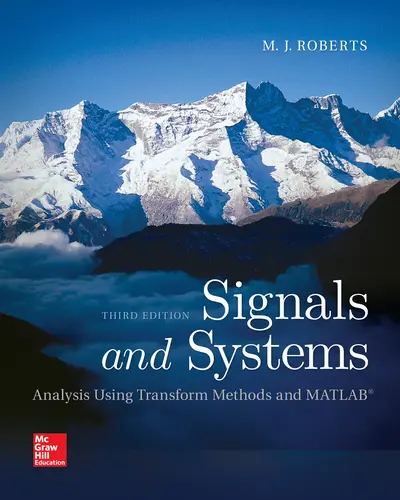
Orders within the United States are shipped via FedEx or UPS Ground. For shipments to locations outside of the U.S., only standard shipping is available. All shipping options assume the product is available and that processing an order takes 24 to 48 hours prior to shipping.
View PriceNote: Connect can only be used if assigned by your instructor.
Learn more about Connect >* The estimated amount of time this product will be on the market is based on a number of factors, including faculty input to instructional design and the prior revision cycle and updates to academic research-which typically results in a revision cycle ranging from every two to four years for this product. Pricing subject to change at any time.
Quick Actions (Only for Validated Instructor Accounts):
Request an Ebook Sample Contact a RepSignals and Systems: Analysis Using Transform Methods and MATLAB® has been extensively updated, while retaining the emphasis on fundamental applications and theory. The text includes a wealth of exercises, including drill exercises, and more challenging conceptual problems.
McGraw-Hill's Connect, is also available as an optional, add on item. Connect is the only integrated learning system that empowers students by continuously adapting to deliver precisely what they need, when they need it, how they need it, so that class time is more effective. Connect allows the professor to assign homework, quizzes, and tests easily and automatically grades and records the scores of the student's work. Problems are randomized to prevent sharing of answers an may also have a "multi-step solution" which helps move the students' learning along if they experience difficulty.
2) Mathematical Description of Continuous-Time Signals
3) Discrete-Time Signal Description
4) Description of Systems
5) Time-Domain System Analysis
6) Continuous-Time Fourier Methods
7) Discrete-Time Fourier Methods
8) The Laplace Transform
9) The z Transform
10) Sampling and Signal Processing
11) Frequency Response Analysis
13) z-Transform System Analysis
14) Filter Analysis and Design
Appendix I – Useful Mathematical Relations
Appendix II – Continuous-Time Fourier Series Pairs
Appendix III – Discrete Fourier Transform Pairs
Appendix IV – Continuous-Time Fourier Transform Pairs
Appendix V – Discrete-Time Fourier Transform Pairs
Appendix VI – Tables of Laplace Transform Pairs
Appendix VII – z-Transform Pairs